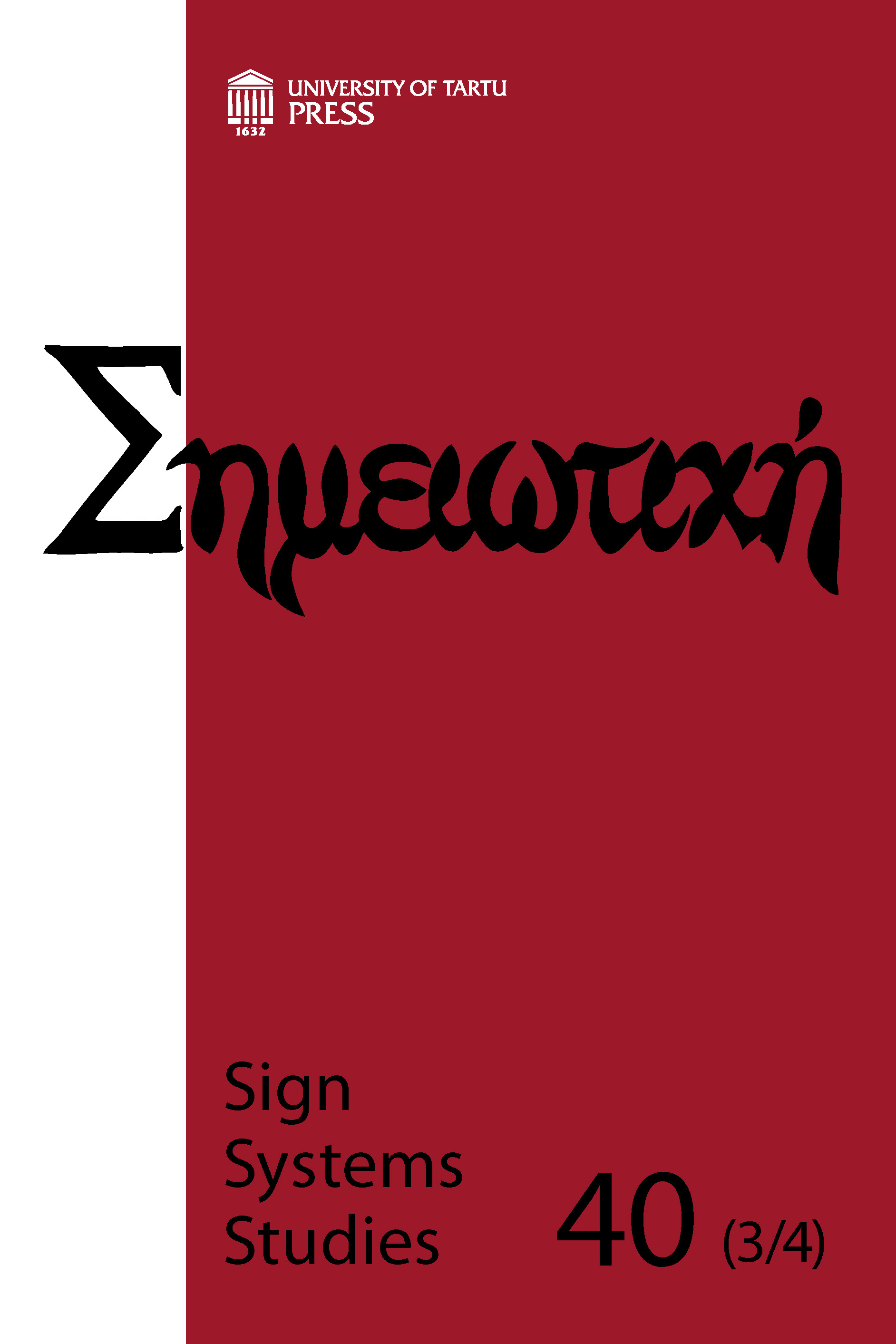Goethe's glosses to translation
DOI:
https://doi.org/10.12697/SSS.2012.3-4.05Abstract
The logical and illogical unity of translation with a triadic approach was mediated by Peirce's three-way semiotics of sign, object, and interpretant. Semiotranslation creates a dynamic network of Peircean interpretants, which deal with artificial but alive signs progressively growing from undetermined ("bad") versions to higher determined ("good") translations. The three-way forms of translation were mentioned by Goethe. He imitated the old Persian poetry of Hafiz (14th Century) to compose his German paraphrase of West-östlicher Divan (1814–1819). To justify the liberties of his own translation/paraphrase, Goethe furnished notes in Noten und Abhandlungen and Paralipomena (1818–1819). Through his critical glosses, he explained information, adaptation, and reproduction of the foreign culture and literature (old Persian written in Arabic script) to become transplanted into the "equivalent" in German 19th Century verse. As critical patron of translation and cultural agent, Goethe's Divan notes are a parody mixing Orient and Occident. He built a (lack of) likeness, pointing in the pseudo-semiosis of translation to first and second degenerate types of object and sign.Downloads
Download data is not yet available.
Downloads
Published
2012-12-01
How to Cite
Gorlée, D. L. (2012). Goethe’s glosses to translation. Sign Systems Studies, 40(3/4), 340–368. https://doi.org/10.12697/SSS.2012.3-4.05
Issue
Section
Articles


